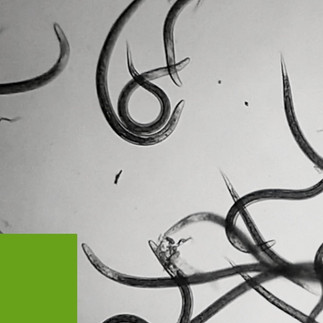Fighting Crane Fly Larvae—Guide
- nemaBiodiversity Team
- Mar 19
- 2 min read
Updated: May 8
—
The crane fly (Tipula paludosa) is a common insect whose larvae, known as leatherjackets, feed voraciously on grass roots, resulting in thinning lawns, brown patches, and weakened turf in gardens, sports fields, and pastures.

Adult crane flies measure approximately 2.5 to 3 cm in length and are easily recognized by their slender grey-brown bodies, elongated wings, and long, delicate legs—often resembling oversized mosquitoes. From late August to September, adults are typically seen flying over grassy areas—particularly on warm, sunny days—or by the presence of empty pupal cases protruding from the soil. During this period, females lay eggs directly into turfgrass, initiating the next generation.
Although adult crane flies pose no threat—and may even contribute modestly to pollination—their larvae can cause significant damage. Leatherjackets pass through four larval stages, reaching up to 4 cm in length before pupating in late August. By day, they remain just beneath the grass surface, where their feeding weakens the root system. Their presence attracts birds and small mammals, whose digging further exacerbates lawn damage, leaving behind holes and bare patches.

—
The peak period of larval damage occurs from early spring to June, just before pupation. During this time, larvae feed most aggressively, reducing turf resilience. Early intervention is crucial. The best time to manage infestations is in September, when young larvae are still small and highly susceptible.
As natural allies, beneficial nematodes such as Steinernema feltiae are particularly effective. These microscopic organisms actively seek out crane fly larvae in the soil, enter their bodies, and release symbiotic bacteria that halt feeding—eliminating the pest without harming other soil life.
It’s a simple, sustainable approach that supports healthy green spaces
Beneficial nematodes
... ... ... ... ... ... ...
—Further Reading
Peck, D. C. 2006. European Crane Fly (also known as leatherjackets): A guide on Tipula paludosa and Tipula oleracea, covering their impact and management strategies. Integrated Pest Management, New York State IPM Program.
Grewal, P. S., Ehlers, R. U., & Shapiro-Illan, D. I. 2005. Critical issues and research needs for expanding nematodes in biocontrol. This chapter discusses challenges and opportunities for using nematodes as biocontrol agents. In Nematodes as Biocontrol Agents, CABI Publishing.
Simard, L., Brodeur, J., Gelhaus, J., Taschereau, É., & Dionne, J. 2006. Emergence of a new turfgrass pest in Québec. This study explores the increasing presence of European crane flies on golf courses. Phytoprotection, 87, 43–45.






